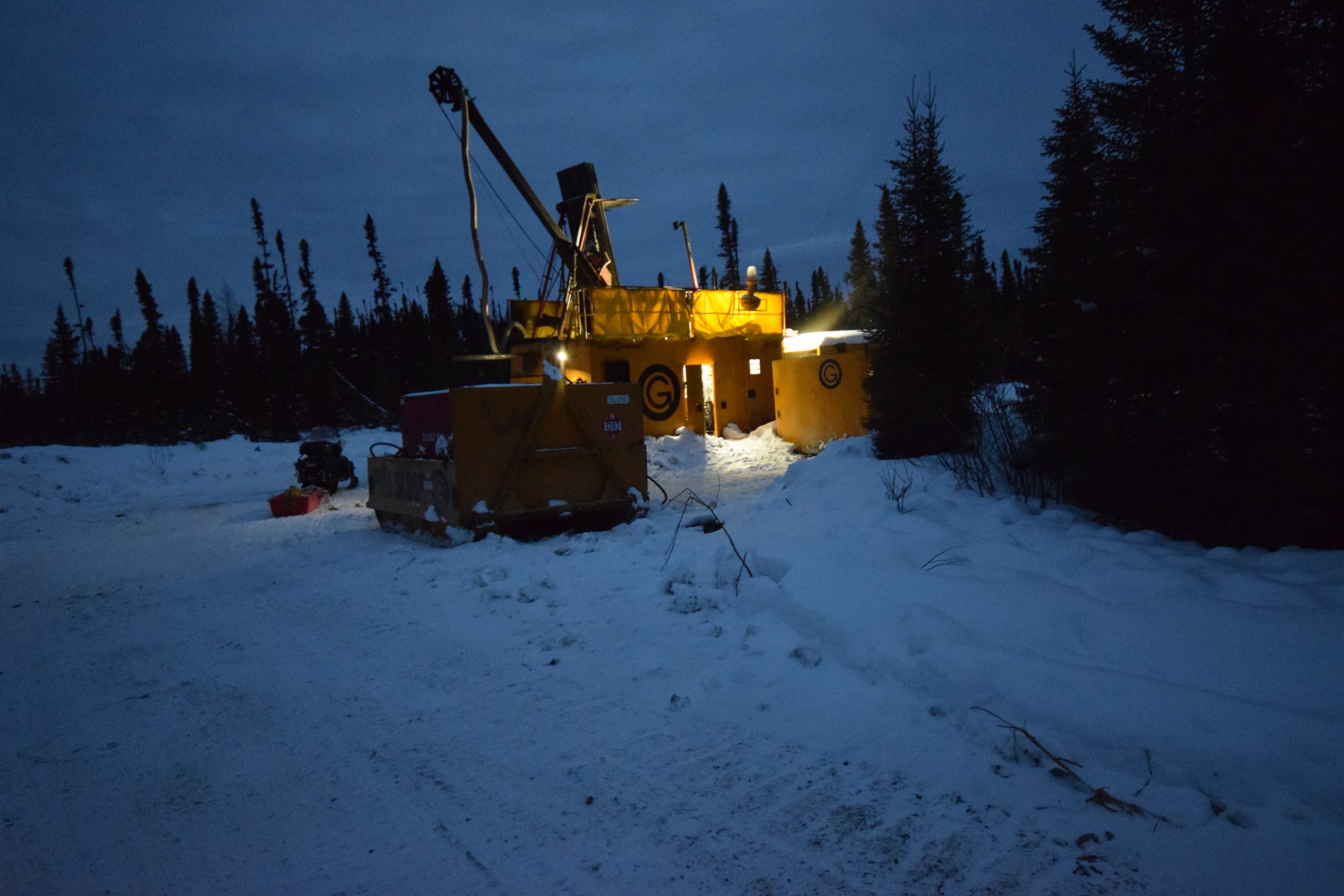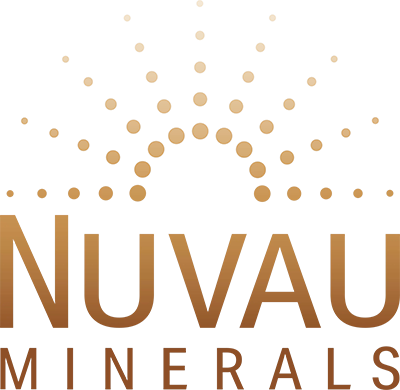Nuvau Minerals Revitalizing Quebec's Historic Matagami Mining Camp

Nuvau Minerals revitalizing Quebec's Matagami camp with 2027 copper-zinc production potential and highest-ever Abitibi gold till anomaly discovery.
- Nuvau Minerals has acquired a large, premier base metal mining camp in Quebec, Canada (Matagami camp) with a past-producing asset that offers both exploration potential and near-term production opportunities.
- The company has nearly completed an earning agreement with Glencore that will give them 100% ownership of a 1,300 sq km property (larger than the entire Sudbury Basin) with 60 years of copper-zinc production history.
- Nuvau has identified approximately 10 years of resource in the Caber Complex (western side of property) and plans to restart the Bracemac-McLeod mine (with 3 years of potential production) with relatively low capex (~$50M).
- The property has significant exploration upside with over 80 identified VMS-style deposit targets and recently discovered gold potential, including what may be the highest gold grain count ever found in the Abitibi region.
- CEO Peter van Alphen brings extensive experience from FNX Mining, Lake Shore Gold, Tahoe Resources, and Premier Gold, with a focus on restarting and optimizing past-producing mines through hands-on management.
Nuvau Minerals has positioned itself to take over and revitalize one of Quebec's historic mining regions with the acquisition of the Matagami camp, a premier base metal mining asset with a 60-year production history. Under the leadership of President and CEO Peter van Alphen, the company is executing a dual strategy of near-term copper-zinc production alongside significant exploration potential on an expansive 1,300 square kilometer land package. This approach aims to transform a non-core Glencore asset into a sustainable mining operation with multiple value drivers.
The Matagami property, which ceased operations in June 2022, presents a compelling opportunity for investors seeking exposure to base metals with a gold exploration kicker in a tier-one jurisdiction. Peter drew a parallel to the successful FNX Mining model that revitalized past-producing mines in the Sudbury Basin.
"This could be the FNX of Quebec."
Management Experience: A Track Record of Revitalizing Past Producers
Peter van Alphen brings relevant experience from his time at multiple successful mining operations, including FNX Mining, Lake Shore Gold, Tahoe Resources, and Premier Gold. His background includes hands-on work revitalizing past producers and optimizing operations in the Canadian mining sector.
Peter's approach comes from his experience with FNX Mining in Sudbury, where the team successfully restarted old mines that major companies had abandoned. He emphasizes a hands-on management style:
"You've got to be there. You got to be underground. You got to be involved in the plans... The devil's in the detail."
This operating philosophy aligns with the company's strategy at Matagami. His operational history includes transforming struggling assets into profitable operations. At Lake Shore Gold, the team increased production from approximately 2,500 tons per day to 4,500 tons per day. Similar operational improvements were achieved at Mercedes Mine in Mexico, which was "struggling at the time, kind of breaking even, and we managed to turn that around really nicely."
Matagami Camp: A Significant Land Package With Production History
The Matagami camp is a copper-zinc producing region that has been in operation since approximately 1960. Located in the town of Matagami, Quebec, the camp has hosted 12 producing mines over its 60-year history, predominantly on the eastern side of the property.
The scale of the property is substantial, with Peter emphasizing its significance:
"If you take the whole Sudbury basin, that sort of meteorite impact that is there, this camp is actually larger. What we've got is actually larger than the entire Sudbury basin."
Glencore became the most recent owner after acquiring Xstrata, which had previously acquired the asset from Noranda. As a non-core asset for Glencore, the opportunity emerged for Nuvau to take over both exploration and production potential. The property includes a 3,000-ton-per-day mill, existing infrastructure, and defined resources that position Nuvau as a potential near-term producer.
Production Restart Strategy: A Two-Phase Approach
Nuvau has developed a two-phase approach to production that would first restart the recently closed Bracemac-McLeod mine while developing the Caber Complex for longer-term production.
The Bracemac-McLeod mine, which Glencore was operating until June 2022, contains approximately one million tons of remaining resource. Nuvau has discovered a westward extension that could potentially increase this to two million tons, providing approximately three years of production. Peter describes this as their "starter mine," allowing for initial production while developing their larger resource.
Following this, the company would transition to the Caber Complex on the western side of the property, which contains approximately 10 years of defined resources across three deposits that would be mined together. This represents the first significant resource development on the western portion of the property in the camp's 60-year history.
"We've got about 10 years of resource already defined in... three deposits but very close to each other that we would mine as the Caber Complex. There's approximately 10 years, 9 and a half years to be exact in our PEA of production that can come out of the Caber Complex."
Capital Requirements & Timeline
One advantage of the Nuvau story is the relatively modest capital requirements compared to many mining development projects. Peter estimates that restarting the Bracemac-McLeod mine, including getting the mill operational, would cost approximately $50 million.
The company has already completed a preliminary assessment (PA) for the Caber Complex and is working on incorporating the Bracemac-McLeod mine into an updated assessment. Production could potentially begin by 2027, with permitting being the critical path item rather than construction or financing.
"The most realistic timeline currently we see here is that it would take us probably into 2027 to be able to get a permit for a tailings facility."
He added that Quebec is a mining-friendly jurisdiction with responsive government agencies, which could help streamline the permitting process.
Interview with President & CEO, Peter Van Alphen
Strategic Advantages: Infrastructure & Community Support
The Matagami property offers significant infrastructure advantages that reduce capital requirements and development timelines. The existing 3,000-ton-per-day mill, which Nuvau has the option to acquire for $5 million as part of their agreement with Glencore, represents substantial value. Peter estimates:
"There is $300-400 million worth of infrastructure that we get as part of our deal with Glencore."
Another key advantage is the strong community support. Unlike many mining projects that face social license challenges, the town of Matagami was built around the mining camp and is eager to see operations resume.
"We've almost got a social demand for this to come back again. You never go to the town of Matagami and hear anybody saying 'we don't want that horrible mine back again.' Like it's just not in the vocabulary. The opposite is true."
Many former employees still live in the area but currently commute to other operations, creating a potential workforce advantage if operations restart.
Exploration Upside: Base Metals & Gold Potential
While the near-term production opportunity provides a foundation, the exploration potential across the massive land package offers significant upside. The company has identified over 80 targets for potential VMS-style deposits in the northern part of the property, using extensive airborne geophysics data and artificial intelligence to refine target selection.
The company has already drilled one target called Renaissance and expects to provide updates on this mineralized zone soon. Perhaps most intriguing is the previously overlooked gold potential. Despite its location near significant gold deposits like Detour Gold, Fenelon (Wallbridge), and Casa Berardi, the Matagami property has never had a dedicated gold exploration program in its history. Recent till sampling has revealed what may be a significant gold discovery.
"We discovered a gold anomaly... which is grains of gold per 10 kg sample... which is over 2,000 grains of pristine gold particles. To our knowledge... it's the highest grain gold count that has ever been seen in the Abitibi."
The property sits on the Sunday Lake deformation zone, which hosts major gold deposits along strike. With 85 kilometers of strike length, the gold exploration potential adds a compelling dimension to the Nuvau story.
Agreement Structure with Glencore
Nuvau has nearly completed an earning agreement with Glencore that will give them 100% ownership of the claims. The company was required to spend $30 million over three years on mining expenses and exploration, which they completed at the end of March 2025.
The final steps include a $10 million USD payment to Glencore (with $5 million in cash and the balance in cash and/or equity), finalization of offtake agreements, and royalty arrangements. Glencore will retain a 2% royalty and offtake rights for production.
Importantly, the agreement allows Nuvau to leave the existing tailings liability with Glencore, avoiding a significant potential cost. However, this means the company will need to permit a new tailings facility for future operations.
2025 Priorities & Strategic Direction
For the remainder of 2025, Nuvau's priorities include completing the earning agreement with Glencore to secure 100% ownership of the claims and updating their preliminary assessment to incorporate the Bracemac-McLeod mine alongside the Caber Complex.
The company plans to continue exploration with a budget of approximately $5-6 million annually, potentially funded through flow-through financing available in Canada. They are also exploring strategic partnerships, particularly for the gold exploration component.
"We'll be looking to update the PEA, then on the exploration side... we can responsibly do $5 to $6 million worth of exploration on the property every year. We have some interest from a group that I think could make for an interesting partner particularly around gold exploration... partnering with somebody to come in on the gold side."
This approach allows the company to focus its core team and capital on advancing the base metal production opportunity while still capturing potential value from the gold exploration upside.
The Investment Thesis for Nuvau Minerals
- Tier-One Jurisdiction: Operating in Quebec, Canada, a premier mining region with government support, established infrastructure, and favorable regulations for mine development.
- Near-Term Production Potential: Two-phase approach with the Bracemac-McLeod mine restart (3 years production) followed by the Caber Complex (10 years) provides visibility on approximately 13 years of potential production.
- Modest Capital Requirements: Estimated $50 million to restart the Bracemac-McLeod mine and refurbish the mill, significantly lower than typical mine development projects.
- Substantial Infrastructure Value: Option to acquire a 3,000 ton/day mill for $5 million, with Peter estimating $300-400 million worth of total infrastructure included in the deal.
- Base Metal Exposure: Approximately 50/50 copper-zinc production profile provides exposure to critical metals needed for electrification and industrial applications.
- Significant Exploration Upside: Over 80 identified VMS-style targets across the massive 1,300 sq km property provide multiple opportunities to expand resources beyond the initial 13-year mine life.
- Gold Discovery Potential: Recently identified gold anomaly with the highest grain count ever recorded in the Abitibi region adds a compelling exploration dimension along 85 km of the Sunday Lake deformation zone.
- Experienced Management: CEO Peter van Alphen brings directly relevant experience from FNX Mining, Lake Shore Gold, and other companies with a track record of successfully revitalizing past-producing mines.
- Strong Community Support: Unlike many mining projects, Matagami has "social demand" for mine restart, with local workforce availability enhancing operational feasibility.
- Strategic Optionality: Potential to leverage strategic partnerships for gold exploration while focusing company resources on advancing base metal production.
Macro Thematic Analysis
The Nuvau Minerals opportunity sits at the intersection of several compelling macro trends in the mining sector. Copper remains a critical metal for global electrification initiatives, with supply deficits projected over the coming decade as electric vehicle adoption, renewable energy infrastructure, and grid modernization accelerate. Zinc, while less frequently discussed, plays an essential role in infrastructure development and corrosion protection, with limited new supply coming online.
Quebec represents one of the most stable and supportive mining jurisdictions globally at a time when geopolitical tensions are driving increased focus on secure supply chains. This strategic positioning in a Western jurisdiction with established mining infrastructure is increasingly valued by investors and downstream users of these metals.
The company's dual focus on near-term production and exploration upside aligns with investor preferences in the current market, which favors revenue-generating stories over pure exploration plays. The gold exploration component provides additional optionality and diversification amid strong precious metals performance.
Analyst's Notes




Subscribe to Our Channel
Stay Informed























